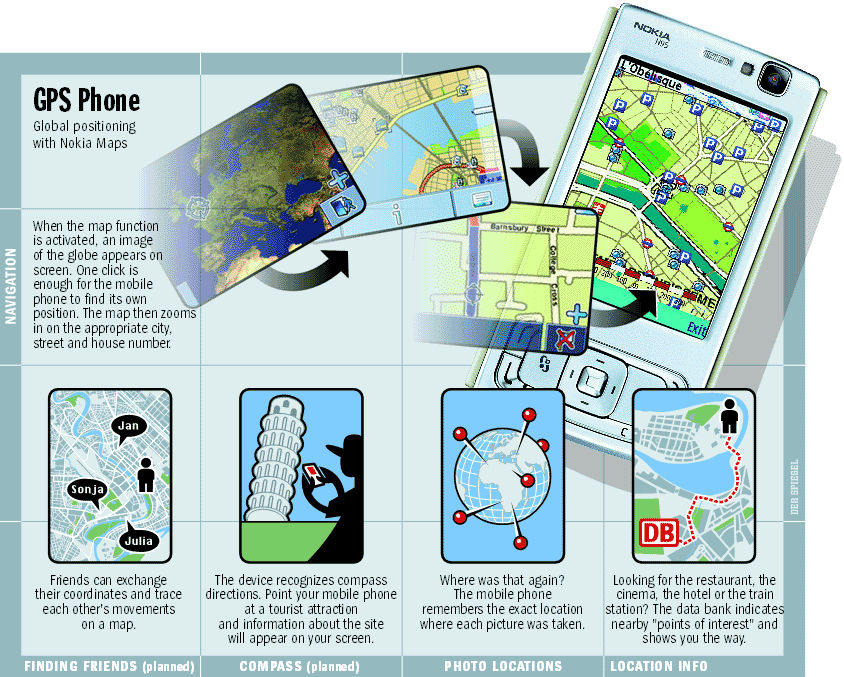One can also make a rough guess of the location of a computer based on its IP address. You can convert IP addresses to city or region names at Geobytes.com or HostIP.com. They also offer simple scripts for mentioning the user's location when they visit your Web site.
If you have the latitude and longitude of a location, you can jump directly to it in Google Maps by entering the coordinates into the search box.
For mobile applications, your latitude and longitude can be determined using the Global Positioning System (GPS) or other radio-based mean like finding the distance to nearby cell towers. To provide wireless 911 service, the FCC has mandated location-awareness for cell phones. While the entire nation is not yet covered, location-aware cell phones will eventually be ubiquitous.
Vendors are beginning to ship phones with location-based applications. Here we see Nokia's applications built using their own mapping system:

Phones running Google's Android operating system will also feature applications based on Google Maps.
For more on this topic see:
- Google Maps API tutorials
- short article on GPS
- Der Spiegel article on Pocket Positioning applications
- James Fallows on Google Earth